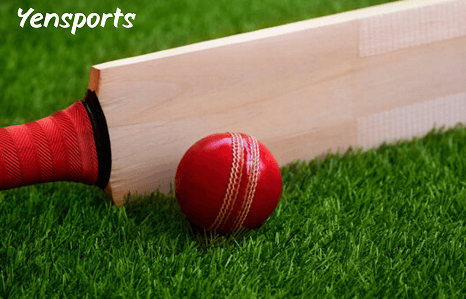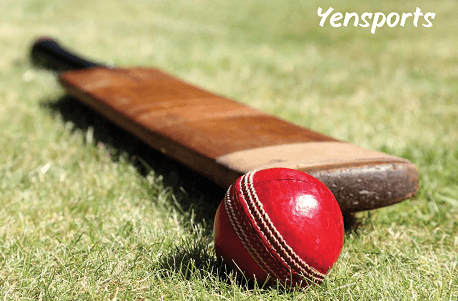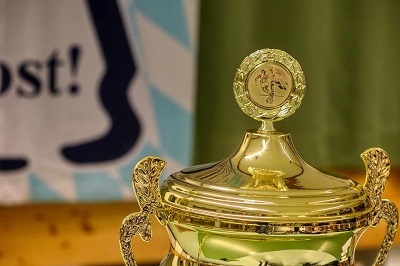Cricket Bat and Ball: The Necessities of the Game
Cricket is one of the oldest sports in the history of the world, with a historical development spanning centuries. At the core of this game are the bat and ball, the two most important components of the game, not just a set of tools to play the game. They are an absolute necessity for playing the game and also for theory. This article provides an in-depth discussion on the cricket bat and ball, in which we look at the design, history, and its importance in the game. We will also address some frequently asked questions to gain a deeper understanding of its functions and importance.

The Cricket Bat: Design, Materials, and Evolution
From its humble beginnings, cricket has evolved with history into this bat that looks more like a hockey stick but used to be one piece of wood in the old days. Nowadays, cricket bats are very technical and specialized equipment designed with performance in mind for the players across all the different forms of the game.
Design and Construction:
Now, willow wood is readily available with both types in use: English willow (Salix alba caerulea) is lighter in weight with excellent performance and has the reputation of being made of the finest quality which leads it to be used most extensively in professional-grade bats while the Kashmir willow though heavier and more durable can be used for lower-grade or junior bats.
- A long flat blade and a handle are the features of a bat. Usually, the blade length of a bat ranges between 20 to 24 inches and its width is 4.25 inches; this is the maximum allowed width for professional cricket bats according to the rules that the International Cricket Council has laid down. Cane is used for making a handle, which is an elastic material that provides comfort and absorption of shock.
- The sweet spot is the feature of a cricket bat, meaning the area on the blade that generates the most power when hitting the ball. The sweet spot usually lies at 4 to 6 inches from the bottom of the blade and is the area where players hit most of the balls. The size and weight of the bat also come into play, as some bats are made to favor hitting with power, while others are made to favor more precise, technical strokes.
History of the Cricket Bat:
The shape of the modern cricket bat is very different from the bats of many years ago. In the early days of cricket, the bat was small, narrow and flat-shaped. Over time, manufacturers continued to experiment with different shapes and designs to improve the racket’s ability to hit the ball farther and with more accuracy. For this reason, the weight distribution of the racket has become more concentrated on the lower half, hence the common “heavy” rackets used by power hitters in the modern era.
The Cricket Ball: Construction, Types, and Use

The cricket ball is a hard, solid thing used in the game for batting and bowling. It is indispensable to the dynamics of the game because its condition will determine how the ball behaves in the air and off the pitch.
Construction of the Cricket Ball:
- A standard cricket ball consists of a leather cover stitched together with an inner core of rubber or cork. An important feature, for example, is the two raised rows of stitches running around the ball which is used by the bowler to generate movement in the air and off the pitch. The core is surrounded with layers of string wound tightly to hold it all together in a leather cover.
- Test cricket (long-form matches) balls are usually red, while pink is the color used for matches played under lights, such as day-night Tests. The white ball is used in limited-overs formats like One Day Internationals (ODIs) and Twenty20 (T20) matches.
Types of Cricket Balls:
While the ball is built the same way, there are different types of balls based on the type of cricket format. There are various grades of cricket balls, but they are not the same for weight, size, or color:
- Red Ball: It is used in Test cricket, where the cricket ball swings and seams well over longer periods.
- White Ball: It is used in limited-over formats. The white ball gets dirty very soon but offers better visibility under lights.
- Pink Ball: It is a variant of the red ball, to be used in day-night Tests. The pink ball is more visible than the red ball in artificial light.
Why the Condition of the Ball Matters?
The position of the ball is very important in any game, especially in the game of Test cricket. During the game, all players use different techniques to change the position of the ball. You can maintain or alter your seams by polishing them with sweat, saliva or wax. The seam of the ball reacts differently to air and pitch, so the player may swing or spin the ball.
Cricket Bat and Ball FAQs:
1. Why is a cricket bat made of willow?
The reason for using willow for cricket bats is because it is light yet hard and enables the player to muster power without losing control over the bat. The wood does have a good balance of strength and flexibility, which allows it to produce a sweet spot for effective shots.
2. How do cricket ball colors affect the game?
The main influence of the color of a cricket ball is on visibility. The red ball is used in Test cricket since it is much harder and keeps its shape for longer periods. The white ball is used in the limited-overs format as it is visible better in artificial light, but dirtier much faster. In between red and white balls comes pink. They are more visible in lights, yet retain some of the hardness of the red ball.
3. What is the ‘sweet spot’ on a cricket bat?
The sweet spot of a cricket bat refers to the blade area that can generate the most favorable output in terms of power and control when the ball hits it. Normally, it occurs near the middle of the face of the bat and thus represents the area where there is the greatest effectiveness for a strike by the ball.
4. To what extent does the condition of the cricket ball affect bowling?
How the ball behaves can have a great impact on maintaining the condition of a cricket ball. A well-maintained seam may help bowlers generate movement swing or spin. The strategies usually employed by bowlers often involve shining one side to keep it smooth and the other rough, thus creating asymmetry and enhancing swing.
5. Does the type of bat affect the performance of a player?
Certainly, yes; a player’s performance may be affected by the type of bat. If a bat is too heavy, it makes one lose his or her timing and speed, whereas a very light bat does not generate sufficient force for shots to be aggressive. Players would usually go for a bat as per their game type tcanbe defensive, sharp, or a game of power.
Conclusion:

A cricket bat and a ball, while the two things most fundamentally necessary for cricket, also play a special role in how the sport goes down. From bat design to bat material, through ball construction and ball condition, much has changed for these pieces of equipment throughout the years that have contributed to cricket as a thrilling yet strategic sport. Through these two major components, the subtleties are understood to give appreciation to finer details about this sport everyone loves.

